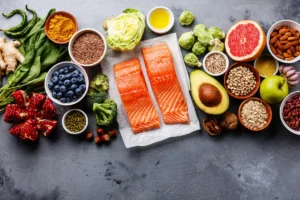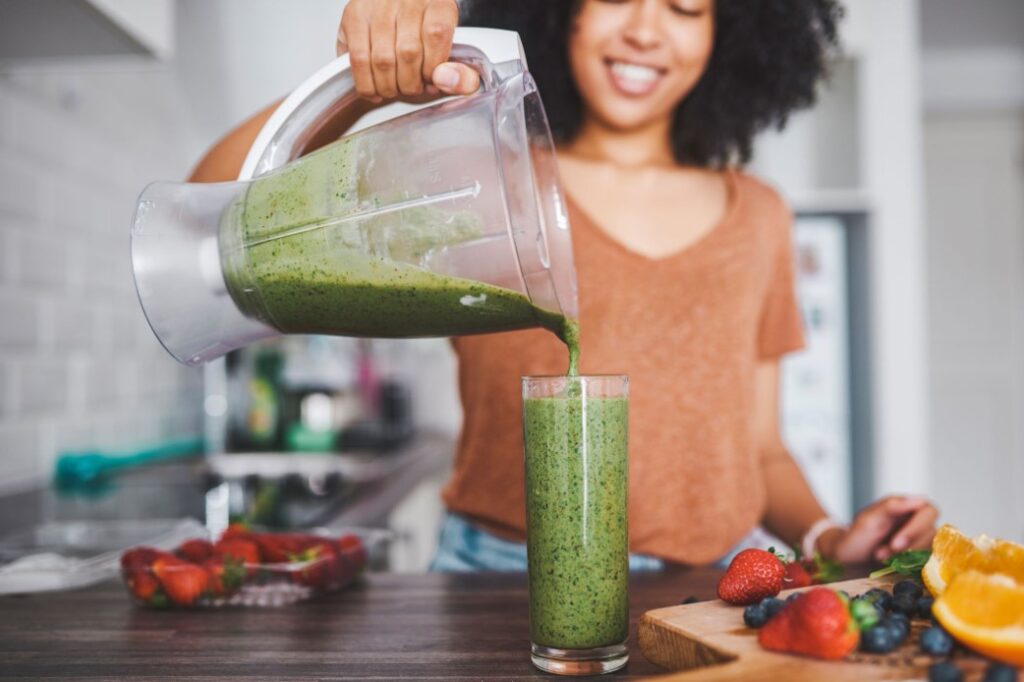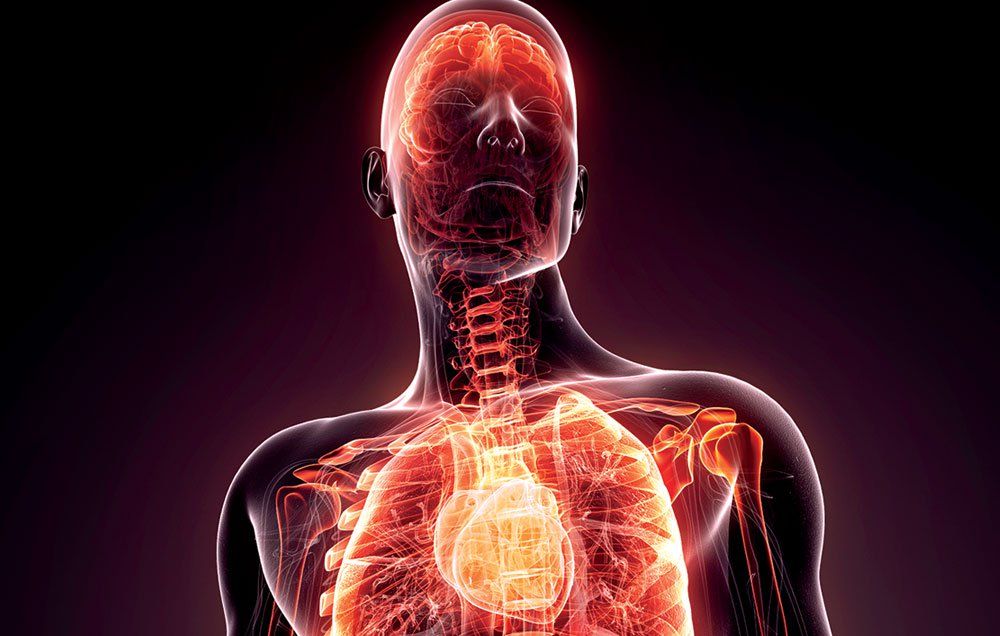Treating Inflammation With Food

Some of the minerals and substances mentioned in conversations about the anti-inflammatory diet include anthocyanins, curcumin, omega-3 fatty acids, and resveratrol. Does it sound difficult to you? Definitely! However, things need not be so convoluted.
Salmon, avocado, almonds, and olive oil are all examples of nutrient-dense and healthful fats that are central to the anti-inflammatory diet. This seven-day anti-inflammatory eating plan for newbies details the foods to prioritize and provides a week’s worth of healthful, uncomplicated meals with reduced ingredient lists, making them easy to prepare even on the busiest of days.
Some of the minerals and substances mentioned in conversations about the anti-inflammatory diet include anthocyanins, curcumin, omega-3 fatty acids, and resveratrol. Does it sound difficult to you? Definitely! However, things need not be so convoluted. Salmon, avocado, almonds, and olive oil are all examples of nutrient-dense and healthful fats that are central to the anti-inflammatory diet.
This seven-day anti-inflammatory eating plan for newbies details the foods to prioritize and provides a week’s worth of healthful, uncomplicated meals with reduced ingredient lists, making them easy to prepare even on the busiest of days. A recent study claims that cardiovascular disease, among other illnesses, can be traced back to chronic systemic inflammation.
The anti-inflammatory eating plan is quite similar to the Mediterranean diet, which is also well-liked and beneficial to health. Both emphasize consuming a variety of fresh, whole foods and reducing processed foods, red meat, and added sweets. The anti-inflammatory diet somewhat deviates from the conventional one by emphasizing the consumption of foods that have been scientifically proven to lower inflammation, such as dark leafy greens, berries, and vegetables like cherries, pomegranates, berries, and beets.

Source: netdoctor.co.uk
Anti-Inflammatory Diet
A diet low in inflammation-causing foods is called an anti-inflammatory diet. When you stick to an anti-inflammatory diet meal plan and prepare anti-inflammatory dishes, you may alleviate symptoms and, ideally, treat auto-immune disorders, regulate your cycles, lessen anxiety and bloating, and much more.
The Reasons I Follow a Low-Inflammatory Diet
This is what I call my anti-inflammatory diet because it’s the simplest description. But it’s not just a diet for me. It’s a lifestyle, a treatment for illness, a means to better health and well-being. This diet is helping me overcome PCOS, leaky gut, IBS, acne, and anxiety. In addition to consuming items that reduce inflammation, I have increased my consumption of nutritious, whole meals.
What we eat has a direct correlation to how much nourishment our bodies take in. Because of this, both my professional and personal life have flourished, and I feel like I’m living my life’s mission at last. Please understand that this is not a binary choice like many other “diets.” This is how I prefer to do things, period.
What exactly is chronic inflammation?
You’ve probably heard this expression before, but you might not make the link between what you eat and how you feel overall. The pain and redness of a skin rash is often used as an analogy for inflammation. It’s the immune system’s protective response to a foreign threat.
Acute inflammation is excellent for protecting our bodies, but persistent inflammation is not. When our bodies are chronically inflamed, we are actually attacking ourselves from the inside out. Constipation, diarrhea, arthritis, asthma, allergies, IBS, irregular periods and other symptoms are just some of the ways it might show up in people.

Source: menshealth.com
What Effects Does Chronic Inflammation Have on Hormones?
There’s more to chronic inflammation than just pain and swelling. Communication with the full body is a focus as well. As a result, inflammation can cause serious disruptions in women’s menstrual cycles. Hormones play a crucial role in facilitating communication between the various parts of the body. When it comes to periods, hormones play an important role as communicators.
The Value of Limiting Inflammation
Because chronic inflammation isn’t natural, reducing its levels in the body is crucial. You might not be at your physical and mental best if it’s present. Problems like those listed above can be mitigated or alleviated by lowering inflammation levels. If you don’t have any inflammation, you’ll feel great. When you’re at your best, you’re fulfilling your mission in life, and you have enough extra good energy to pour out to the world. The repercussions of it are bound to spread.
Exercise
New research adds to the long list of health benefits brought by regular physical activity. As little as 20 minutes of exercise could have anti-inflammatory effects, according to a new study. Picking a team sport would be a great way to stay active because you will have a group to keep you consistent and accountable. Football/soccer is a great group sport to start with. You can check out Lordping.co.uk for the latest updates in the world of football.
Which anti-inflammatory diet is the simplest to follow?
Rather than cutting back, I like to think about what I can add to my diet. When I give my attention to the things that I should be consuming, the inflammatory ones go. Some foods that do a good job of reducing inflammation are listed below. Anti-inflammatory free radicals are neutralized by the abundant antioxidants found in cruciferous vegetables including kale, cabbage, bok choy, and broccoli.
Vitamin C, folate, and magnesium are just a few of the many essential elements found in vegetables. They provide fuel for the beneficial bacteria in your digestive tract and include anti-inflammatory phytonutrients. Fruits are beneficial for inflammation since they are high in fiber and antioxidants. Make an effort to purchase a rainbow’s worth of produce, including apples, blueberries, pomegranates, and bananas.
Whole grains: prioritize eating quinoa, rice, amaranth, and gluten-free oats, all of which are naturally gluten-free. Foods like salmon, avocados, coconut oil, and seeds are excellent sources of Omega-3-rich healthy fats. The anti-inflammatory and flavor-enhancing properties of spices have long been recognized. Ginger, garlic, cinnamon, and turmeric are all wonderful spices. Fermented foods are great for gut health because they contain beneficial probiotic bacteria. Foods that have undergone fermentation are some of my favorites.

Source: thelemonway.com
Which foods are the most inflammatory?
Sugar produces inflammation in the liver, which decreases the body’s ability to respond to insulin. And (for all you females out there! ), excessive insulin might interfere with ovulation. Mixtures of alcohol and sugary drinks are the most common way it is ingested.
Additionally, alcohol causes insulin resistance, gut flora destruction, malabsorption of nutrients, impaired detoxification, and depletion of the anti-inflammatory molecule glutathione, all of which contribute to the atrophy of the hippocampus. Different people react differently to gluten, but studies have shown that about six out of ten women experience inflammation after eating gluten or wheat.
After gluten, dairy is the most prevalent cause of an adverse reaction to certain foods. There is a protein in dairy called A1 casein that causes inflammation because it prompts your immune system to produce more white blood cells.
Food sensitivity
Although wheat and dairy intolerance are among the most often seen, there are other, more individualized causes of gastrointestinal distress. Due to our individuality, it is vital that you are aware of how various meals affect your body. When a particular meal causes an immunological response by irritating gut bacteria and triggering inflammation of the gut lining, this is known as food sensitivity.
